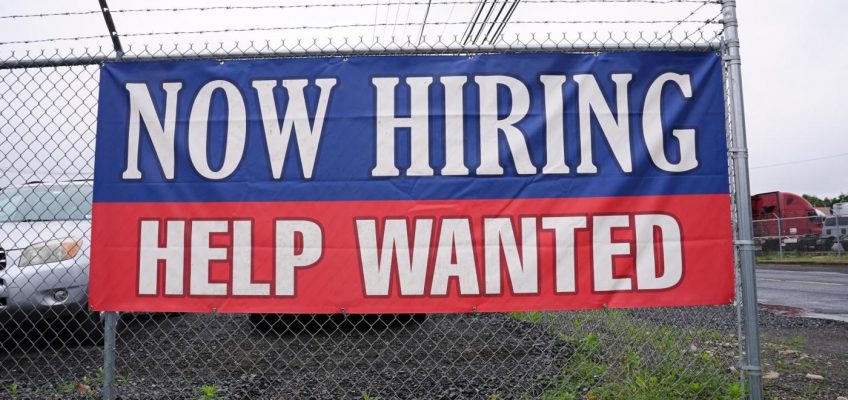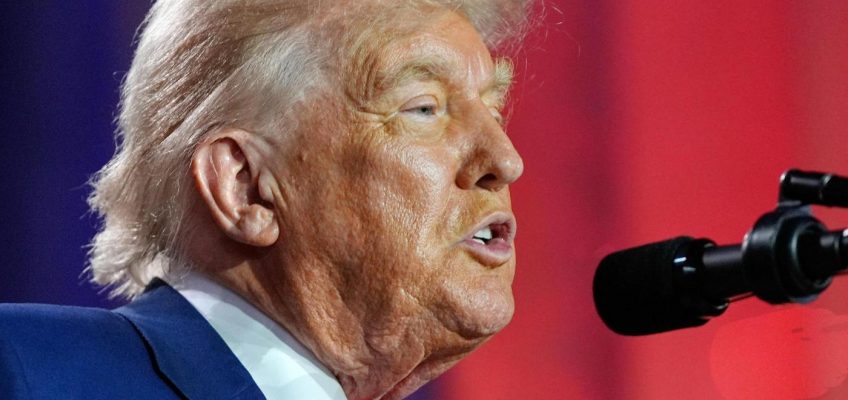By STAN CHOE, Associated Press Business Writer
NEW YORK (AP) — Wall Street is hanging near its records on Thursday, but the calm surface of the U.S. stock market is hiding some roiling moves underneath. Alphabet is rising, and Tesla is tumbling following a jumble of profit reports from big U.S. companies.
The S&P 500 was 0.2% higher in morning trading after setting an all-time high the day before. The Dow Jones Industrial Average was down 204 points, or 0.5%, as of 10 a.m. Eastern time, and the Nasdaq composite was 0.2% higher.
Alphabet climbed 1.6% after the company behind Google and YouTube delivered a fatter profit for the latest quarter than analysts expected. It’s leaning more into artificial-intelligence technology and said it’s increasing its budget to spend on AI chips and other investments this year by $10 billion to $85 billion.
Related Articles
UnitedHealth says it is under a federal investigation and cooperating
US applications for jobless benefits fall for sixth straight week, remain at historically low level
France’s first couple sue Candace Owens for defamation over claims that Brigitte Macron is a man
Most US adults still support legal abortion 3 years after Roe was overturned, an AP-NORC poll finds
Today in History: July 24, Apollo 11 returns home from the moon
That helped push up other stocks in the AI industry, including a 0.8% rise for Nvidia. The chip company was one of the strongest forces lifting the S&P 500 because it’s the largest on Wall Street in terms of value.
But a 7.9% drop for Tesla kept the market in check. Elon Musk’s electric-vehicle company reported results for the spring that were roughly in line with or above analysts’ expectations, and Musk is trying to highlight Tesla’s moves into AI and robotaxis.
The focus, though, remains on how Musk’s foray into politics is turning off potential customers, and he said several rough quarters may be ahead as “we’re in this weird transition period where we’ll lose a lot of incentives in the U.S.”
Stocks have broadly been rallying for weeks on hopes that President Donald Trump will reach trade deals with other countries that will lower his stiff proposed tariffs, along with the risk that they could cause a recession and drive up inflation. The record-setting gains have been so strong that criticism is rising about how expensive stock prices have become. That in turn puts pressure on companies to deliver solid growth in profits in order to justify their gains.
Besides Tesla, Chipotle Mexican Grill also helped weigh on the market. The burrito chain delivered a profit for the spring that topped analysts’ expectations, but its growth in revenue came up short. Its stock fell 12%.
IBM dropped 10.4% even though it likewise reported a stronger profit than expected. Analysts pointed to slowing growth in its software business, among other things underneath the surface.
American Airlines lost 7.9% despite reporting a stronger profit than expected. The company said it expects to report a loss for the summer quarter. It also gave a forecast for full-year results that had a wide range: between a loss of 20 cents per share and a profit of 80 cents per share, depending on how the economy performs.
Reactions in the stock market have generally been stronger than usual when companies beat or miss their profit targets by a wide margin, according to Julian Emanuel at Evercore.
Other extreme moves have also been roaring underneath the market’s surface, including huge swings for “meme stocks.” Those are stocks where traders are looking to jump in amid online cheerleading and ride it higher before getting left holding the bag when momentum stops. Opendoor Technologies is heading for a gain of 10.9% following a manic stretch where it swung by at least 10%, up or down, in 10 straight days.
Such swings, though, haven’t been showing up in overall market indexes, which have been gliding recently. The S&P 500 hasn’t had a day where it swung by at least 1% in a month.
In the bond market, Treasury yields held relatively steady following the latest signals that the U.S. economy seems to be holding up OK despite all the pressures on it from tariffs and elsewhere.
One report said that fewer U.S. workers applied for unemployment benefits last week, a potential signal of easing layoffs. A separate report from S&P Global suggested growth in U.S. business activity accelerated in July, and the preliminary results easily topped economists’ expectations.
That helped nearly cement expectations on Wall Street that the Federal Reserve will hold interest rates steady at its next meeting next week, even though Trump has been agitating angrily for cuts. The European Central Bank, which had earlier been cutting its rates, also held steady on Thursday as it waits to see how Trump’s tariffs affect the economy.
The yield on the 10-year U.S. Treasury note briefly approached 4.44% in the morning before pulling back to 4.40%, where it was late Wednesday.
In stock markets abroad, indexes rose across much of Asia and Europe. Tokyo’s jump of 1.6% and London’s rise of 1% were two of the bigger gains.
AP Writer Teresa Cerojano contributed.




